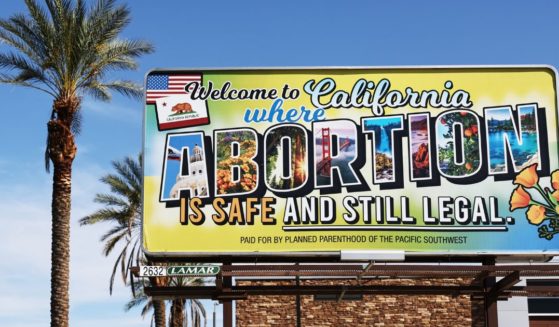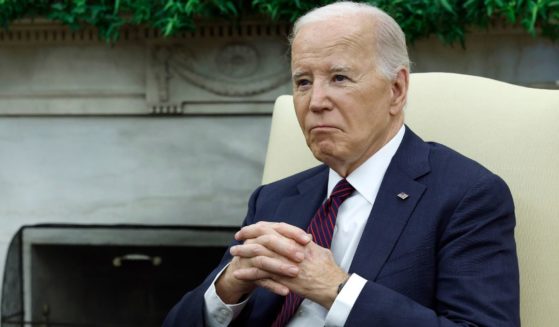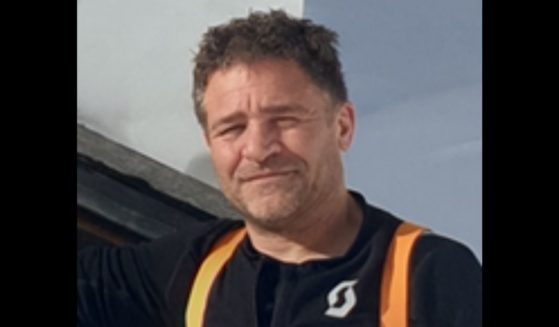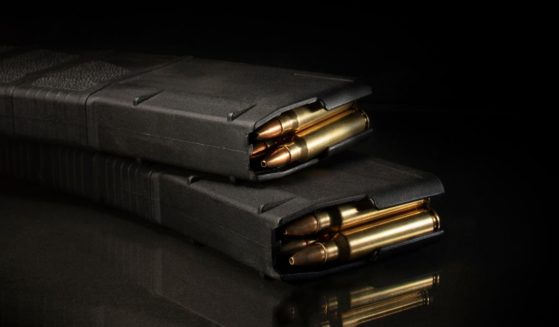Illegal crossings a part of life at Mexico's southern border
FRONTERA HIDALGO, Mexico (AP) — It was still dark when the first Guatemalan farm worker walked ashore in Mexico early Thursday, just the bottoms of his shorts damp from the shallow ford of the Suchiate River.
As the sky brightened, another man drove a big blue tractor across the muddy waters to Guatemala with a sprayer on the back. A short time later a man and a boy crossed astride a horse, followed by a man carrying his sandals and pants to keep them dry.
Such scenes are part of daily life in the Mexican border town of Frontera Hidalgo, where it’s not just migrants crossing the river but also locals for whom the frontier is a cartographers’ construct largely to be ignored when it’s time to work or shop.
Mexico announced recently that it is sending 6,000 agents of its new, still-forming, militarized police force known as the National Guard to its southern region for immigration enforcement as part of a deal with Washington to avoid President Donald Trump’s threatened tariffs on Mexican imports.
But those who live here predict that won’t be able to stop the surge in mostly Central American migrants crossing over the notoriously porous border on their way toward the United States, though it could force them into the hands of smugglers and to more dangerous crossing points while altering a way of life that has carried on as long as anyone can remember.
The Suchiate cuts a winding north-south course en route to the Pacific Ocean here, the westernmost part of Mexico’s 697-mile (1,122-kilometer) southern frontier with Guatemala and Belize. Interior Secretary Olga Sánchez Cordero said this week there are at least 300 known points that are hotspots for illegal crossings, as well as 12 official ports of entry staffed by border agents.
Elsewhere, the Mexico-Guatemala border passes through dense jungle, with few roads. Around Frontera Hidalgo the terrain is a patchwork of small farm fields and large banana and palm plantations, with small towns and villages dotting both sides of the riverbank.
While technically illegal, the relaxed back-and-forth flow of people has long been largely tolerated. But word of the impending deployment is making people jittery – even though no Guard agents have arrived so far to join federal police, soldiers and immigration agents who stepped up enforcement in recent months.
Eleven young men carrying knapsacks, also field hands coming to work for the day in Mexico, cautiously entered the river from the Guatemalan side Thursday but midway across caught sight of unfamiliar faces on the Mexican shore and hid in the brush on an island. For all they knew, the three Associated Press journalists could be border agents. By the time they emerged on the Mexican side, one said they had missed the bus to their farm jobs and would have to go back home for the day, a sign of the increasing nervousness palpable in the people.
Far to the north, the number of migrant apprehensions at the U.S.-Mexico border was 132,887 in May, the highest monthly total in a decade. Most making the hazardous journey are fleeing poverty and violence in Honduras, Guatemala and El Salvador, and the U.S. is pushing Mexico to crack down.
Foreign Affairs Secretary Marcelo Ebrard said this week that as part of the deal with Washington, Mexico needs to show results in reducing the migrant flow within 45 days.
There has been no word of how the newly formed Guard will operate, but a force of 6,000 seems more than necessary just to bolster the government’s previous tactic of operating checkpoints on key highways leading north. Several of those were already operating in southern Chiapas state, with police and immigration agents checking IDs of bus passengers, so locals fear the guardsmen will focus more on the border itself.
“It’s going to affect us because we cross here and we go back,” said Artemio López, who came to Mexican soil with another young man from Margaritas, Guatemala, about a 30-minute horse ride away, heading to a farm with backpack sprayers hanging from their shoulders. “We’ll be left without work.”
For years, Mexican farmer Galindo Merida has been grazing his horses and cattle on islands in the Suchiate. There was a time when the islands were Mexican territory, but changes in the winding river’s course turned them Guatemalan. Still, the 52-year-old goes there every couple of days.
“Just imagine – I have my animals there on the island, and if they put the Guard (here), who is going to keep an eye on my animals?” Merida said.
In Frontera Hidalgo, most Guatemalans crossing the river come to buy food and other goods at the town’s shops and then wade back. Locals worry businesses could suffer if authorities scare people off.
Migrants cross here, too, though not in large numbers. Those who do then walk through town to the highway, sometimes stopping to ask for food or money for transportation.
“The human traffickers are going to increase a lot,” Merida predicted. “Because if it’s closed here, (they will) go over there or over there.”
There isn’t more migrant traffic in Frontera Hidalgo in part because not far downriver it costs just $1.30 (25 pesos) to cross from Tecun Uman, Guatemala, to Ciudad Hidalgo, Mexico, on rudimentary rafts. Made of large inner tubes lashed together with a wood plank deck, they go back and forth all day ferrying people and merchandise without passing through any immigration or customs controls.
Cristobal Barrios has been operating a raft since he was 13. Now 38, he worries that any ramped-up river enforcement could hurt his and others’ livelihood.
“Everyone is worried about that,” said Barrios, who estimated that about 800 men and teens pole the rafts while hundreds more work loading and unloading on both sides. “We all provide for our families from here.”
When a large caravan of Central Americans crossed in October, Mexico sent marines who warned the rafters to not carry migrants, Barrios said. They mostly obeyed until the marines left a couple of months later, and then it was back to business as usual.
Back in Frontera Hidalgo, Maurilia Mercedes Reyna Álvarez, 21, sells soft drinks to those who cross the river, her shop in her modest home backing up to the Suchiate. Sometimes they are migrants, sometimes they are day laborers.
“There are too many places where a lot of people cross,” Álvarez said, holding a baby to her shoulder. “It would be really difficult for them to avoid people always crossing.”
The impracticality of completely securing the border was underscored Thursday by Edgar Corso of the governmental National Human Rights Commission, who contrasted the situation around the city of Tapachula, near Frontera Hidalgo, with the Guatemalan village of La Mesilla, about 60 miles (100 kilometers) to the north.
“If we can say with certainty that at Tapachula there is a porous border,” Corso said, “then at La Mesilla we in reality do not even have a border. People cross, and that’s it.”
The Western Journal has not reviewed this Associated Press story prior to publication. Therefore, it may contain editorial bias or may in some other way not meet our normal editorial standards. It is provided to our readers as a service from The Western Journal.
Truth and Accuracy
We are committed to truth and accuracy in all of our journalism. Read our editorial standards.












